Computers
The First Mass-Produced Computer
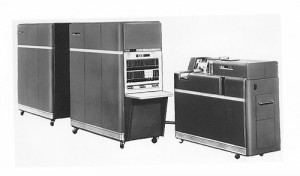
IBM announced its 650 series of computers, the first mass-produced computer, and the dominant computer of the decade. The IBM 650 stored information on a rotating magnetic drum and received it on programmed punch cards. Its memory stored numbers with up to 10 decimal digits.
The Transition to Transistors Begins
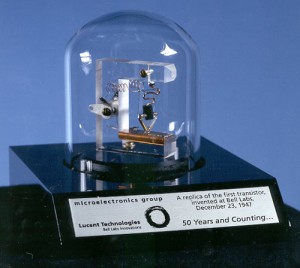
Originally designed to create improvements to electromechanical relays and vacuum tubes in telephone switching equipment, Bell Labs holds a press conference in New York to publicly demonstrate the first point-contact transistor. The transistor represents a significant advance in technology. As it is developed over the next few years, it will become the successor to the vacuum tube, the primary method of controlling electronic circuitry at the time. The use of transistors allows the development of the integrated circuit and microchips which kickstarted the rapid advance of electronic and computerized technology over the last 70+ years. Every industry that utilizes technology, from communications to computers to space travel to video games to media, owes a great deal to the development of the transistor.
First Stored Program Run

The first program on the world’s first stored-program computer, the Manchester Small-Scale Experimental Machine (SSEM) is run. This first program was designed to test the computer’s reliability and ran for 52 minutes performing 3.5 million operations.
SEAC Machine Dedicated
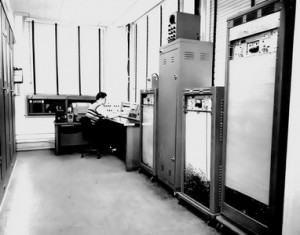
The National Bureau of Standards dedicated the SEAC (Standards Eastern Automatic Computer) in Washington. The SEAC was the first computer to use all-diode logic, a technology more reliable than vacuum tubes, and was the first stored-program computer completed in the United States. Magnetic tape in the external storage units stored programming information, coded subroutines, numerical data, and output.
IBM is Incorporated as CTR

The Computing – Tabulating – Recording Co. (C-T-R), a consolidation of the Computing Scale Co. of America, The Tabulating Machine Co., and The International Time Recording Co. is incorporated in New York. In 1924, C-T-R adopted the name International Business Machines, better known as IBM.
Charles Babbage Unveils Difference Engine
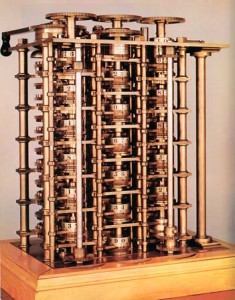
In a paper to the Royal Astronomical Society, Charles Babbage unveils his design for a machine he called the Difference Engine, the first example of a mechanical computing machine. The British government funded the building of a Difference Engine, which Babbage never actually completed. However, Babbage’s design for the Difference Engine and his later Analytical Engine spurred future designs of working mechanical computers. In 1991 a working Difference Engine was constructed using Babbage’s plans, proving that his designs would have worked.
One Processor to Rule Them All
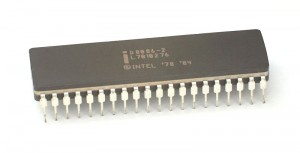
Intel introduces the 16-bit 8086 processor with clock speeds of 10, 8, and 5 MHz. The 8086 would become the basis for the series of processors used in “IBM Compatible” PCs and the x86 family (later marketed under the name “Pentium”) that would dominate the market in the PC era. Ironically, however, it was the modified 8-bit 8088 processor that was used in the original IBM PC, primarily due to factors that would reduce overall cost. The current line of Intel “Core” processors are still based on the same architecture that was introduced with the 8086.
Really Geeky Modem Technology Patented
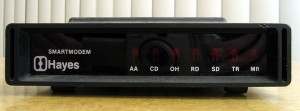
Michael Eaton is granted a patent for the AT Command Set for Modems, which had created a standard language for interacting with modems. Two years earlier, the rights for this command set were purchased by the Hayes Corporation and incorporated into the Hayes Smartmodem 300 as the “Hayes Command Set.” The protocol will become an industry standard used for years to come.
In the early 90’s, needing to use modems so that I could connect to pre-Internet bulletin board systems, I learned the AT command set. I then used and supported modems extensively for about 15 years, and occasionally still do. Because I worked with modems so much, I used to be able to speak the AT command set in my sleep. I know, it impresses the ladies.
The Mac Gets Intel Inside
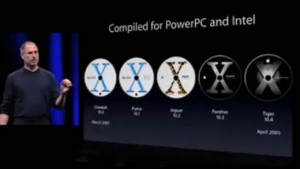
In a keynote address at Apple’s Worldwide Developers Conference, Steve Jobs announces that Macintosh computers will transition from PowerPC to Intel processors and demonstrates Mac OS X running on a computer with an Intel Pentium 4 processor. Jobs revealed at the time that Apple had been secretly preparing for a possible transition to Intel for many years. Unbeknownst to the public, for every version of Mac OS X released, Apple actually had prepared a version running on an Intel processor. By making the transition to Intel, Apple paved the way for the resurgence of the Macintosh computer by making it more compatible with software for Microsoft Windows.
The Apple II Enters the Market
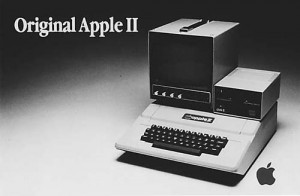
The original Apple II computer goes on sale. The Apple II featured an a 1MHz MOS 6502 processor, an integrated keyboard, a built-in BASIC programming environment, expandable memory (4K expandable to 48K), a monitor capable of color graphics, a sound card, and eight expansion slots. To include all these features in one discrete unit was highly innovative and the reason it is considered the first practical personal computer. However, in the spirit of the original computer hacker, the Apple II was also available as a circuit-board only, without keyboard, power supply, or case. A couple of years later, the combination of the Apple II series and the first “killer app” of the business world, the VisiCalc spreadsheet program, popularizes personal computers among business users. This sudden success of the “home computer” in the business world surprises established technology companies and eventually leads IBM to scramble to develop their IBM PC.
